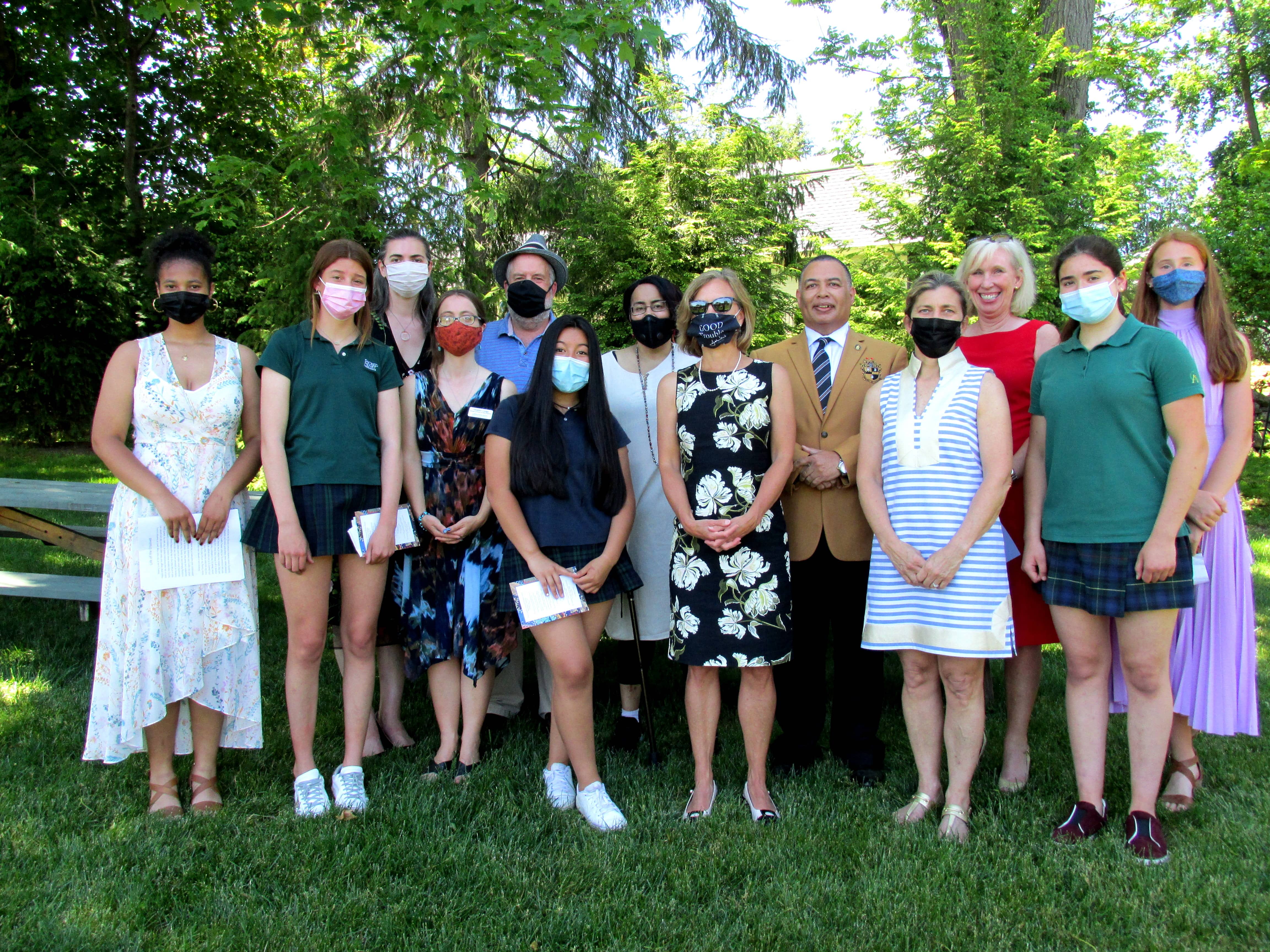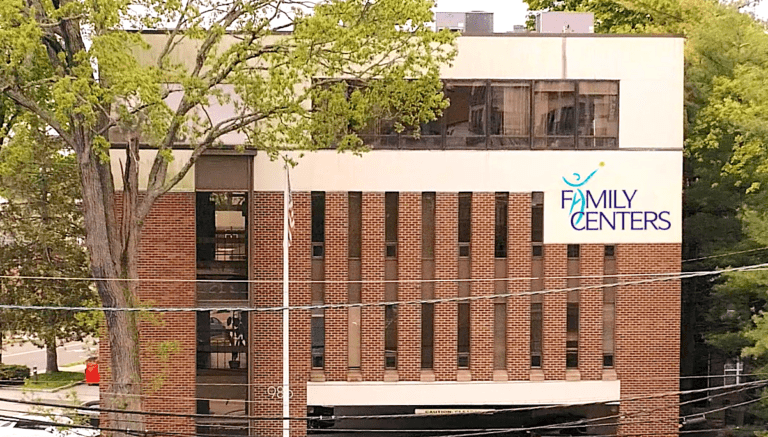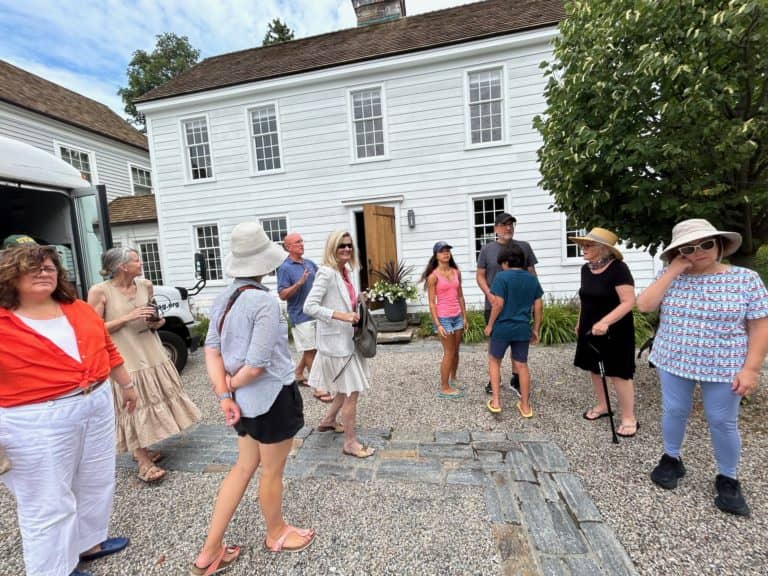
 Forces have joined in the town of Greenwich to tell its hidden history, “To return the colors to the historical fabrics of our community,” so said Dennis Culliton, co-founder of the Connecticut-based Witness Stones Project that “seeks to restore the history and to honor the humanity and contributions of the enslaved individuals who helped build our communities.”
Forces have joined in the town of Greenwich to tell its hidden history, “To return the colors to the historical fabrics of our community,” so said Dennis Culliton, co-founder of the Connecticut-based Witness Stones Project that “seeks to restore the history and to honor the humanity and contributions of the enslaved individuals who helped build our communities.”
Culliton was present on May 27 when the curtains were drawn back on that hidden history at a ceremony kicked off by First Selectman Fred Camillo at the Greenwich Historical Society by his proclamation: “Today’s ceremony honors four of the 15 enslaved individuals who resided at the Bush Holley House in 1790 to 1830. They include Cull Bush Sr. and his partner Patience, and Candace Bush and her daughter Hester Mead.”
“Some truths are hard to accept, some realities we would rather forget,” introduced the Rev. Thomas Nins, pastor of the First Baptist Church. The truth was, he told, that there were slave laborers in the Town of Greenwich for generations.
And there was placed in the soil, in the back of Cos Cob’s Bush Holley House on the Greenwich Historical Society site, the four “witness stones” with those enslaved names, their dates, and their occupations. Those four are part of an estimated 300 enslaved individuals who lived in Greenwich from 1790 to 1830. Until recently not much has been known of those four slaves.
Enter Sacred Heart Greenwich middle schoolteacher Kelly Bridges with her inspired idea that would embrace those four slaves. “I teach United States history from the colonial period through the Civil War. Slavery existed during that period throughout much of the country, and yet our textbook suggests that northern states abolished it shortly after the American Revolution… Not only did slavery exist in the northern states, but these states were also complicit in perpetuating it right up to the Civil War.”
Bridges wanted her 7th and 8th grade students to understand “a more accurate history.” Learning from a workshop how local museums were working to preserve African American history and culture, Bridges was introduced to Dennis Culliton and the Witness Stones Project, and found the Greenwich Historical Society “most willing to participate,” as was “important colleagues” at Sacred Heart in her research idea to enlist her students to research through the Historical Society Archives three of those four slaves: Cull Bush,Sr., his domestic partner Patience, and Candace Bush. What they learned was shared by four students at the ceremony.
In 8th grader Lillie Foster’s opinion, “Slavery in the United States was one of the most unfair treatments of people in history. Many of the millions of enslaved people…weren’t even recognized as human, but rather as property or objects.” Born into slavery Cull Bush, Sr. was a personal servant of David Bush, the largest slave holder in Greenwich. “In 1803, Cull was finally emancipated…when he was about 28 years old,” Foster shared. Citing the scant information found on him, she said, “Cull didn’t even have a gravestone in memory of his life.”
Cull’s partner Patience, “was bought by David Bush,” shared 7th grader Lily Broughton. “Patience had six children…she reclaimed her humanity by becoming a mother.” Broughton cited the dehumanizing seen in David Bush’s will, with Patience and other slaves “labeled as possessions.” With their value also stated: “Some slaves like Patience were only valued at seven dollars,” Broughton learned, “even though she was qualified under Connecticut’s Gradual Abolition Act.” She was grateful that, “Today we will lay a witness stone in memory of Patience and to finally set her soul free.”
Candice Bush received a higher value of “about $70” in David Bush’s will, recounts Sacred Heart 8th grader Hazel Carrion. “Listed in the 1790 census, we suppose she began working for the Bushes when she was 10 years old…with household chores…soap and candle-making, basic cleaning, cooking, and sewing.” Her slave quarters were “a small attic-like space without windows, causing extreme overheat in the summer, and terrible frigidness during the winter.” Candace would not be freed until 1825. “Candace is a woman whose name I say with extreme pride…She rose to freedom and finished her admirable life in approximately 1859. Candace was buried in Union Cemetery located in Greenwich, Connecticut.”
According to Sacred Heart 7th grader Clare Junius they were asked to address their research with five themes of slavery: the economics of slavery, dehumanization, paternalism, treatment of the enslaved, and agency and resistance. Her takeaway from the research was, “We need to keep telling and spreading these stories because …it brings an understanding of our history. Especially now, remembering our history is important.”
Participating Greenwich Academy students were represented by 10th grader Ana Gonzalez whose class had researched Hester Mead. “She is still a woman surrounded How two Greenwich school students engaged in the Witness Stones Projects to research and honor the lives of four slaves who lived in the Bush Holley House in Cos Cob.by obscurity,” she told. Documented to be living at Bush Holley from age 13 in 1820, there followed a 30-year-void in Hester’s life. Indentured to the founder of Greenwich Academy, Darius Mead, the question is still out of how she came to carry the name of Mead.
Gonzalez paid tribute to “The remarkable work of the Greenwich Historical Society,” she said, “without it, it is very likely that Hester’s story and many others like hers would be forgotten.”
“Talk about hidden history,” shared Gonzalez’s history teacher, Kristen Erickson, “some of the documents that the Historical Society shared with us included lists of property, and it would be a barrel of this, a wagon, and then a person’s name. It’s extraordinary, really sad and shocking.” Erickson has shared the impact of her students’ research. “For me, history is at its most powerful when it’s emotional, when you have an emotional response to something. It’s not just dry and happened a long time ago – if you can relate.”
Erickson had engaged her students with the Witness Stones Project last winter, a year after Sacred Heart, learning about it on a podcast called “Teaching Hard History.” “It was a way to bring to life a kind of hidden history. So, I thought that this was a way to bring that hidden history to life for our students.”




